Opinion & Analysis
Does the Golf Ball Go Too Far?
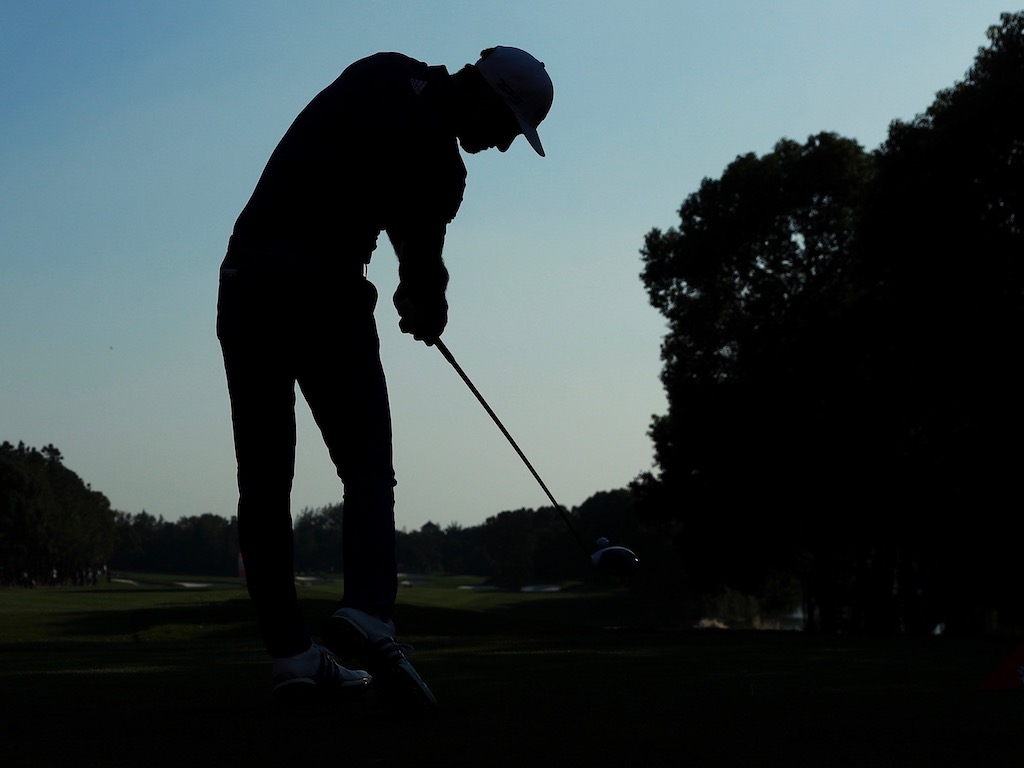
Recently we have heard everyone discussing whether or not PGA Tour players hit the golf ball too far. Everyone from Tiger Woods to Brad Faxon, Brandel Chamblee, Mike Davis, and Wally Uihlein have weighed in with their thoughts. I myself have struggled with what side of the fence I should be on, so I wanted to learn more about it before I made a judgement.
Because I am a golf nerd, I decided to do a little digging.
My first question in all of this is, what is too far? How do we judge that the golf ball or distance has reached a point where it is diminishing the product for our viewing pleasure? How do we know if technology and distance have effected the integrity of the game? Too far is a statement of relativity. One-hundred years ago, it could have taken you 12 hours to travel 200 miles. Now you can fly Los Angeles to Sydney in that same amount of time.
When Harry Vardon was winning championships early in his career, he and every other competitor exclusively used the gutta percha golf ball with his name on it, “The Vardon Flyer.” The gutta percha was invented in 1848 and used until a new ball came into play in the early 1900’s. This new ball was the Haskell Rubber ball invented by Coburn Haskell and Betrum Work. It was the first rubber ball that was a complete game changer. Despite is obvious performance enhancements and distance gained, however, many of the top players were slow to begin to play the new ball. In fact, it took Harry Vardon almost 10 years to make the switch. I can imagine they were having the same conversations back then that we are having today.
There are tons of examples of this throughout golf history, and although there have been limitations on technology there has never been a roll back in the golf ball. The ball has always won out. So I ask myself and you why now are we claiming that the ball is going too far? I decided to compare scoring average on the PGA Tour to driving distance and golf course length. Below in the graphs you will see what I found.
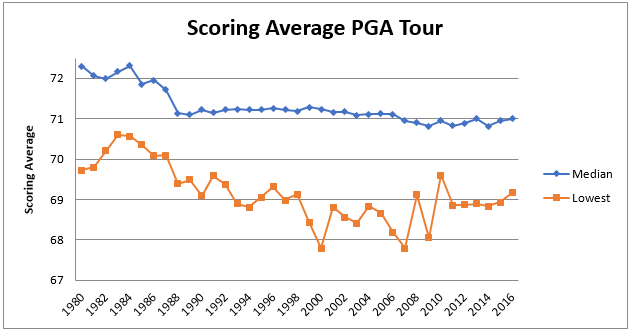
First, I must say it is very difficult to find accurate data on driving distance and scoring average before 1980. From 1980 to present time, this information has been tracked by the PGA Tour, so I decided to only look at the past 37 years for an example. Since 1980, the PGA Tour median scoring average has gone from 72.3 to 70.995 in 2016. That is a difference of 1.305 shots or a change of 1.8 percent over 37 years. The lowest scoring average on the PGA Tour has gone from 69.73 to 69.17. That is a difference of o.56 strokes or an 0.8 percent of change. So yes, scoring average has gotten better. Is this because the golf ball is going farther?
Let’s now look at driving distance on the PGA Tour since 1980 in the chart below.
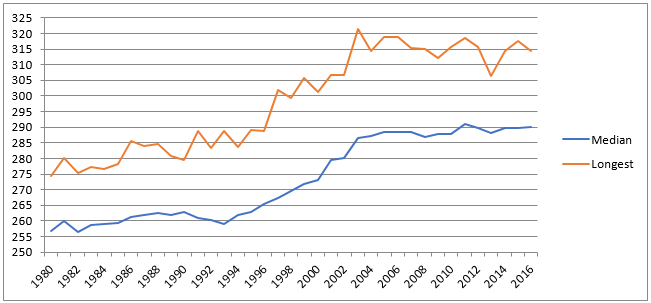
In 1980, the median driving distance on the PGA Tour was 256.7 yards. In 2016, it was 290.1 yards. That is a gain of 33.4 yards over 37 years, or about 1 yard per year. This is a percentage change of 13 percent. The longest hitter in 1980 averaged 274.3 yards. In 2016, the longest hitter averaged 314.5 yards, an improvement of 40.2 yards. That’s a percentage change of 14.6 percent. PGA Tour players in 2016 hit it a lot farther than they did in 1980, yet scoring averages haven’t changed much. Is this because golf course length has kept up with distance gained?
Finding course length information since 1980 was difficult. I decided to only look at the majors championships as examples, where data is more plentiful. From here, I made the decision to only use the U.S. Open and PGA Championship. Unlike the Masters, they are played on a different course every year. As for The Open Championship, it’s generally a different kind of golf where distance and strategy can hinge on the elements. I felt as though this was the best representation for all courses on the PGA Tour. In the chart below, you will find the average course length of the U.S. Open and PGA Championship from 1980-2016.
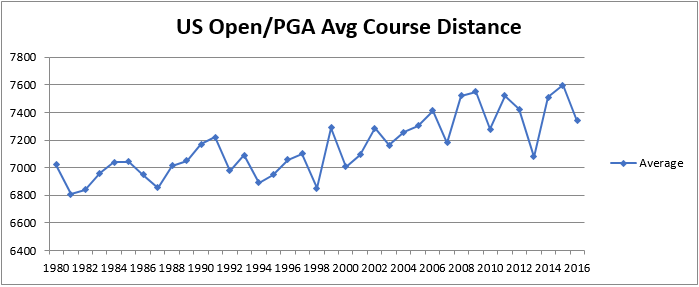
As you can see, golf courses have absolutely gotten longer. For this chart, I will compare the shortest average length (1981) to the longest average course length (2015). I am doing this because of the smaller data sample size and I believe this would more correctly illustrate the average of all PGA Tour courses. From 1981 to 2015 the golf course length increased by 791 yards (6807 yards to 7598 yards). That’s an increase of 11.6 percent.
For review, we have seen scoring average decrease by 1.8 percent, driving distance increase by 13 percent and course length increase by 11.6 percent. The difficult part about looking at this much data is always trying to interpret it. How is the data helpful, and what story does it tell?
Let’s revisit the driving distance chart one more time with some timeline reference points to paint the picture in a clearer way. These are some of the biggest technological advances in golf since 1980, and they tell a fantastic story of why we saw certain leaps in distance over a short amount of time.
- From 1991 to 2000, the decade of the introduction of bigger metal woods from the 190-cubic-centimeter Big Bertha to the 300-cubic-centimeter Titleist 975D, there was median distance increase of 4.7 percent (12.3 yards).
- Just in the year from 2000–2001, which saw the solid-core Titleist Pro V1 introduced in October of 2000, there was a median distance increase in 2.3 percent (6.3 yards).
- From 2002–2003 (TaylorMade introduced the adjustable-weight R7 driver on Tour in 2004), there was a median distance increase of 2.4 percent (6.6 yards).
In just 4 short years (2000–2003), the median distance on the PGA Tour increased by a whopping 4.9 percent (13.4 yards). Of course, there was a necessary and actionable reaction to this by the USGA when it limited the driver to 460 cubic centimeters following the 2003 season and finalized the COR limit. Since 2003, we have only seen a change in median distance of 1.2 percent, or 3.5 yards. I believe this gain in distance can be explained by better fitting and the presence of launch monitors like TrackMan on tour. There has also been more adjustability added to drivers and several upgrades in shaft technology.
What I don’t understand when looking at this data is why are we just now saying the golf ball is going too far. It seems to me we are 15 years too late in noticing.
- LIKE215
- LEGIT25
- WOW12
- LOL8
- IDHT2
- FLOP5
- OB2
- SHANK20
Instruction
The Wedge Guy: The easiest-to-learn golf basic

My golf learning began with this simple fact – if you don’t have a fundamentally sound hold on the golf club, it is practically impossible for your body to execute a fundamentally sound golf swing. I’m still a big believer that the golf swing is much easier to execute if you begin with the proper hold on the club.
As you might imagine, I come into contact with hundreds of golfers of all skill levels. And it is very rare to see a good player with a bad hold on the golf club. There are some exceptions, for sure, but they are very few and very far between, and they typically have beat so many balls with their poor grip that they’ve found a way to work around it.
The reality of biophysics is that the body moves only in certain ways – and the particulars of the way you hold the golf club can totally prevent a sound swing motion that allows the club to release properly through the impact zone. The wonderful thing is that anyone can learn how to put a fundamentally sound hold on the golf club, and you can practice it anywhere your hands are not otherwise engaged, like watching TV or just sitting and relaxing.
Whether you prefer an overlap, interlock or full-finger (not baseball!) grip on the club, the same fundamentals apply. Here are the major grip faults I see most often, in the order of the frequency:
Mis-aligned hands
By this I mean that the palms of the two hands are not parallel to each other. Too many golfers have a weak left hand and strong right, or vice versa. The easiest way to learn how to hold the club with your palms aligned properly is to grip a plain wooden ruler or yardstick. It forces the hands to align properly and shows you how that feels. If you grip and re-grip a yardstick several times, then grip a club, you’ll see that the learning curve is almost immediate.
The position of the grip in the upper/left hand
I also observe many golfers who have the butt of the grip too far into the heel pad of the upper hand (the left hand for right-handed players). It’s amazing how much easier it is to release the club through the ball if even 1/4-1/2″ of the butt is beyond the left heel pad. Try this yourself to see what I mean. Swing the club freely with just your left hand and notice the difference in its release from when you hold it at the end of the grip, versus gripping down even a half inch.
To help you really understand how this works, go to the range and hit shots with your five-iron gripped down a full inch to make the club the same length as your seven-iron. You will probably see an amazing shot shape difference, and likely not see as much distance loss as you would expect.
Too much lower (right) hand on the club
It seems like almost all golfers of 8-10 handicap or higher have the club too far into the palm of the lower hand, because that feels “good” if you are trying to control the path of the clubhead to the ball. But the golf swing is not an effort to hit at the ball – it is a swing of the club. The proper hold on the club has the grip underneath the pad at the base of the fingers. This will likely feel “weak” to you — like you cannot control the club like that. EXACTLY. You should not be trying to control the club with your lower/master hand.
Gripping too tightly
Nearly all golfers hold the club too tightly, which tenses up the forearms and prevents a proper release of the club through impact. In order for the club to move back and through properly, you must feel that the club is controlled by the last three fingers of the upper hand, and the middle two fingers of the lower hand. If you engage your thumbs and forefingers in “holding” the club, the result will almost always be a grip that is too tight. Try this for yourself. Hold the club in your upper hand only, and squeeze firmly with just the last three fingers, with the forefinger and thumb off the club entirely. You have good control, but your forearms are not tense. Then begin to squeeze down with your thumb and forefinger and observe the tensing of the entire forearm. This is the way we are made, so the key to preventing tenseness in the arms is to hold the club very lightly with the “pinchers” — the thumbs and forefingers.
So, those are what I believe are the four fundamentals of a good grip. Anyone can learn them in their home or office very quickly. There is no easier way to improve your ball striking consistency and add distance than giving more attention to the way you hold the golf club.
More from the Wedge Guy
- The Wedge Guy: Golf mastery begins with your wedge game
- The Wedge Guy: Why golf is 20 times harder than brain surgery
- The Wedge Guy: Musings on the golf ball rollback
- LIKE83
- LEGIT13
- WOW5
- LOL1
- IDHT0
- FLOP4
- OB1
- SHANK8
19th Hole
Vincenzi’s 2024 Texas Children’s Houston Open betting preview

As the Florida swing comes to an end, the PGA Tour makes its way to Houston to play the Texas Children’s Houston Open at Memorial Park Golf Course.
This will be the fourth year that Memorial Park Golf Course will serve as the tournament host. The event did not take place in 2023, but the course hosted the event in 2020, 2021 and 2022.
Memorial Park is a par-70 layout measuring 7,432 yards and features Bermudagrass greens. Historically, the main defense for the course has been thick rough along the fairways and tightly mown runoff areas around the greens. Memorial Park has a unique setup that features three Par 5’s and five Par 3’s.
The field will consist of 132 players, with the top 65 and ties making the cut. There are some big names making the trip to Houston, including Scottie Scheffler, Wyndham Clark, Tony Finau, Will Zalatoris and Sahith Theegala.
Past Winners at Memorial Park
- 2022: Tony Finau (-16)
- 2021: Jason Kokrak (-10)
- 2020: Carlos Ortiz (-13)
In this article and going forward, I’ll be using the Rabbit Hole by Betsperts Golf data engine to develop my custom model. If you want to build your own model or check out all of the detailed stats, you can sign up using promo code: MATTVIN for 25% off any subscription package (yearly is best value).
Key Stats For Memorial Park
Let’s take a look at several metrics for Memorial Park to determine which golfers boast top marks in each category over their last 24 rounds:
Strokes Gained: Approach
Memorial Park is a pretty tough golf course. Golfers are penalized for missing greens and face some difficult up and downs to save par. Approach will be key.
Total Strokes Gained: Approach per round in past 24 rounds:
- Tom Hoge (+1.30)
- Scottie Scheffler (+1.26)
- Keith Mitchell (+0.97)
- Tony Finau (+0.92)
- Jake Knapp (+0.84)
Strokes Gained: Off the Tee
Memorial Park is a long golf course with rough that can be penal. Therefore, a combination of distance and accuracy is the best metric.
Total Strokes Gained: Off the Tee per round in past 24 rounds:
- Scottie Scheffler (+0.94)
- Kevin Dougherty (+0.93)
- Cameron Champ (+0.86)
- Rafael Campos (+0.84)
- Si Woo Kim (+0.70)
Strokes Gained Putting: Bermudagrass + Fast
The Bermudagrass greens played fairly fast the past few years in Houston. Jason Kokrak gained 8.7 strokes putting on his way to victory in 2021 and Tony Finau gained in 7.8 in 2022.
Total Strokes Gained Putting (Bermudagrass) per round past 24 rounds (min. 8 rounds):
- Adam Svensson (+1.27)
- Harry Hall (+1.01)
- Martin Trainer (+0.94)
- Taylor Montgomery (+0.88)
- S.H. Kim (+0.86)
Strokes Gained: Around the Green
With firm and undulating putting surfaces, holding the green on approach shots may prove to be a challenge. Memorial Park has many tightly mowed runoff areas, so golfers will have challenging up-and-down’s around the greens. Carlos Ortiz gained 5.7 strokes around the green on the way to victory in 2020.
Total Strokes Gained: Around the Green per round in past 24 rounds:
- Mackenzie Hughes (+0.76)
- S.H. Kim (+0.68)
- Scottie Scheffler (+0.64)
- Jorge Campillo (+0.62)
- Jason Day (+0.60)
Strokes Gained: Long and Difficult
Memorial Park is a long and difficult golf course. This statistic will incorporate players who’ve had success on these types of tracks in the past.
Total Strokes Gained: Long and Difficult in past 24 rounds:
- Scottie Scheffler (+2.45)
- Ben Griffin (+1.75)
- Will Zalatoris (+1.73)
- Ben Taylor (+1.53)
- Tony Finau (+1.42)
Course History
Here are the players who have performed the most consistently at Memorial Park.
Strokes Gained Total at Memorial Park past 12 rounds:
- Tyson Alexander (+3.65)
- Ben Taylor (+3.40)
- Tony Finau (+2.37)
- Joel Dahmen (+2.25)
- Patton Kizzire (+2.16)
Statistical Model
Below, I’ve reported overall model rankings using a combination of the five key statistical categories previously discussed.
These rankings are comprised of SG: App (24%) SG: OTT (24%); SG: Putting Bermudagrass/Fast (13%); SG: Long and Difficult (13%); SG: ARG (13%) and Course History (13%)
- Scottie Scheffler
- Wyndham Clark
- Tony Finau
- Joel Dahmen
- Stephan Jaeger
- Aaron Rai
- Sahith Theegala
- Keith Mitchell
- Jhonnatan Vegas
- Jason Day
- Kurt Kitayama
- Alex Noren
- Will Zalatoris
- Si Woo Kim
- Adam Long
2024 Texas Children’s Houston Open Picks
Will Zalatoris +2000 (Caesars)
Scottie Scheffler will undoubtedly be difficult to beat this week, so I’m starting my card with someone who I believe has the talent to beat him if he doesn’t have his best stuff.
Will Zalatoris missed the cut at the PLAYERS, but still managed to gain strokes on approach while doing so. In an unpredictable event with extreme variance, I don’t believe it would be wise to discount Zalatoris based on that performance. Prior to The PLAYERS, the 27-year-old finished T13, T2 and T4 in his previous three starts.
Zalatoris plays his best golf on long and difficult golf courses. In his past 24 rounds, he ranks 3rd in the category, but the eye test also tells a similar story. He’s contended at major championships and elevated events in the best of fields with tough scoring conditions. The Texas resident should be a perfect fit at Memorial Park Golf Club.
Alex Noren +4500 (FanDuel)
Alex Noren has been quietly playing some of his best golf of the last half decade this season. The 41-year-old is coming off back-to-back top-20 finishes in Florida including a T9 at The PLAYERS in his most recent start.
In his past 24 rounds, Noren ranks 21st in the field in Strokes Gained: Off the Tee, 30th in Strokes Gained: Around the Green, 25th in Strokes Gained: Total on long and difficult courses and 21st in Strokes Gained: Putting on fast Bermudagrass greens.
In addition to his strong recent play, the Swede also has played well at Memorial Park. In 2022, Noren finished T4 at the event, gaining 2.2 strokes off the tee and 7.0 strokes on approach for the week. In his two starts at the course, he’s gained an average of .6 strokes per round on the field, indicating he is comfortable on these greens.
Noren has been due for a win for what feels like an eternity, but Memorial Park may be the course that suits him well enough for him to finally get his elusive first PGA Tour victory.
Mackenzie Hughes +8000 (FanDuel)
Mackenzie Hughes found himself deep into contention at last week’s Valspar Championship before faltering late and finishing in a tie for 3rd place. While he would have loved to win the event, it’s hard to see the performance as anything other than an overwhelming positive sign for the Canadian.
Hughes has played great golf at Memorial Park in the past. He finished T7 in 2020, T29 in 2021 and T16 in 2022. The course fit seems to be quite strong for Hughes. He’s added distance off the tee in the past year or and ranks 8th in the field for apex height, which will be a key factor when hitting into Memorial Park’s elevated greens with steep run-off areas.
In his past 24 rounds, Hughes is the best player in the field in Strokes Gained: Around the Greens. The ability to scramble at this course will be extremely important. I believe Hughes can build off of his strong finish last week and contend once again to cement himself as a President’s Cup consideration.
Akshay Bhatia +8000 (FanDuel)
Akshay Bhatia played well last week at the Valspar and seemed to be in total control of his golf ball. He finished in a tie for 17th and shot an impressive -3 on a difficult Sunday. After struggling Thursday, Akshay shot 68-70-68 in his next three rounds.
Thus far, Bhatia has played better at easier courses, but his success at Copperhead may be due to his game maturing. The 22-year-old has enormous potential and the raw talent to be one of the best players in the world when he figures it all out.
Bhatia is a high upside play with superstar qualities and may just take the leap forward to the next stage of his career in the coming months.
Cameron Champ +12000 (FanDuel)
Cameron Champ is a player I often target in the outright betting market due to his “boom-or-bust” nature. It’s hard to think of a player in recent history with three PGA Tour wins who’s been as inconsistent as Champ has over the course of his career.
Despite the erratic play, Cam Champ simply knows how to win. He’s won in 2018, 2019 and 2021, so I feel he’s due for a win at some point this season. The former Texas A&M product should be comfortable in Texas and last week he showed us that his game is in a pretty decent spot.
Over his past 24 rounds, Champ ranks 3rd in Strokes Gained: Off the Tee and 30th in Strokes Gained: Total on long and difficult courses. Given his ability to spike at any given time, Memorial Park is a good golf course to target Champ on at triple digit odds.
Robert MacIntyre +12000 (FanDuel)
The challenge this week is finding players who can possibly beat Scottie Scheffler while also not dumping an enormous amount of money into an event that has a player at the top that looks extremely dangerous. Enter McIntyre, who’s another boom-or-bust type player who has the ceiling to compete with anyone when his game is clicking on all cylinders.
In his past 24 rounds, MacIntyre ranks 16th in the field in Strokes Gained: Off the Tee, 17th in Strokes Gained: Around the Green and 10th in Strokes Gained: Total on long and difficult courses.
MacIntyre’s PGA Tour season has gotten off to a slow start, but he finished T6 in Mexico, which is a course where players will hit driver on the majority of their tee shots, which is what we will see at Memorial Park. Texas can also get quite windy, which should suit MacIntyre. Last July, the Scot went toe to toe with Rory McIlroy at the Scottish Open before a narrow defeat. It would take a similar heroic effort to compete with Scheffler this year in Houston.
Ryan Moore +15000 (FanDuel)
Ryan Moore’s iron play has been absolutely unconscious over his past few starts. At The PLAYERS Championship in a loaded field, he gained 6.1 strokes on approach and last week at Copperhead, he gained 9.0 strokes on approach.
It’s been a rough handful of years on Tour for the 41-year-old, but he is still a five-time winner on the PGA Tour who’s young enough for a career resurgence. Moore has chronic deterioration in a costovertebral joint that connects the rib to the spine, but has been getting more consistent of late, which is hopefully a sign that he is getting healthy.
Veterans have been contending in 2024 and I believe taking a flier on a proven Tour play who’s shown signs of life is a wise move at Memorial Park.
- LIKE15
- LEGIT1
- WOW1
- LOL0
- IDHT0
- FLOP0
- OB0
- SHANK2
Opinion & Analysis
Ryan: Why the race to get better at golf might be doing more harm than good

B.F. Skinner was one of the most important psychologists of the 20th century, developing the foundation of the development of reinforcement, and in doing so, creating the concept of behaviorism. In simple terms, this means that we are conditioned by our habits. In practical terms, it explains the divide between the few and far between elite instructors and college coaches.
To understand the application, let’s quickly review one of B.F. Skinner’s most important experiments; superstitions in the formation of behavior by pigeons. In this experiment, food was dispensed to pigeons at random intervals. Soon, according to Skinner, the pigeons began to associate whatever action they were doing at the time of the food being dispensed. According to Skinner, this conditioned that response and soon, they simply haphazardly repeated the action, failing to distinguish between cause and correlation (and in the meantime, looking really funny!).
Now, this is simply the best way to describe the actions of most every women’s college golf coach and too many instructors in America. They see something work, get positive feedback and then become conditioned to give the feedback, more and more, regardless of if it works (this is also why tips from your buddies never work!).
Go to a college event, particularly a women’s one, and you will see coaches running all over the place. Like the pigeons in the experiment, they have been conditioned into a codependent relationship with their players in which they believe their words and actions, can transform a round of golf. It is simply hilarious while being equally perturbing
In junior golf, it’s everywhere. Junior golf academies make a living selling parents that a hysterical coach and over-coaching are essential ingredients in your child’s success.
Let’s be clear, no one of any intellect has any real interest in golf — because it’s not that interesting. The people left, including most coaches and instructors, carve out a small fiefdom, usually on the corner of the range, where they use the illusion of competency to pray on people. In simple terms, they baffle people with the bullshit of pseudo-science that they can make you better, after just one more lesson.
The reality is that life is an impromptu game. The world of golf, business, and school have a message that the goal is being right. This, of course, is bad advice, being right in your own mind is easy, trying to push your ideas on others is hard. As a result, it is not surprising that the divorce rate among golf professionals and their instructors is 100 percent. The transfer rate among college players continues to soar, and too many courses have a guy peddling nefarious science to good people. In fact, we do at my course!
The question is, what impact does all this have on college-age and younger kids? At this point, we honestly don’t know. However, I am going to go out on a limb and say it isn’t good.
Soren Kierkegaard once quipped “I saw it for what it is, and I laughed.” The actions of most coaches and instructors in America are laughable. The problem is that I am not laughing because they are doing damage to kids, as well as driving good people away from this game.
The fact is that golfers don’t need more tips, secrets, or lessons. They need to be presented with a better understanding of the key elements of golf. With this understanding, they can then start to frame which information makes sense and what doesn’t. This will emancipate them and allow them to take charge of their own development.
- LIKE14
- LEGIT5
- WOW1
- LOL2
- IDHT0
- FLOP1
- OB0
- SHANK11
-
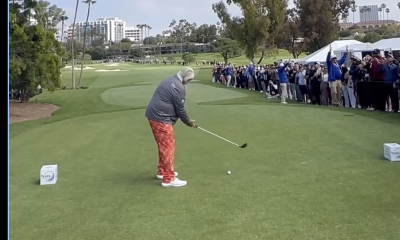
 19th Hole2 weeks ago
19th Hole2 weeks agoJohn Daly stuns fans into silence with brutal opening tee shot on PGA Tour Champions
-
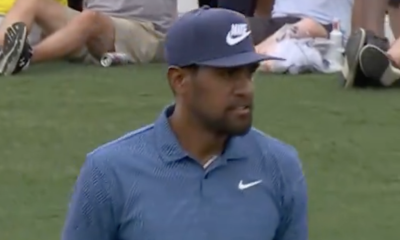
 19th Hole6 days ago
19th Hole6 days agoThings got heated at the Houston Open between Tony Finau and Alejandro Tosti. Here’s why
-

 19th Hole3 days ago
19th Hole3 days agoReport: Tiger Woods has ‘eliminated sex’ in preparation for the 2024 Masters
-
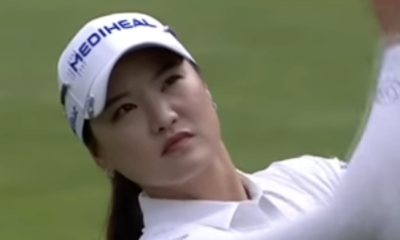
 19th Hole2 weeks ago
19th Hole2 weeks ago2-time major champ announces shock retirement from the sport at age of 33
-

 19th Hole2 weeks ago
19th Hole2 weeks agoEdoardo Molinari reveals the latest PGA Tour golfer to turn down ‘good offer’ from LIV Golf
-

 19th Hole2 weeks ago
19th Hole2 weeks agoCharlie Woods finds it tough going on American Junior Golf Association debut
-
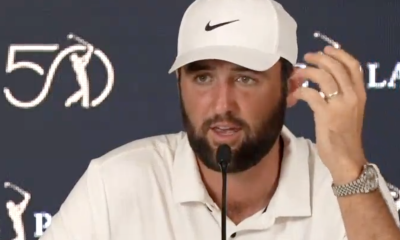
 19th Hole3 weeks ago
19th Hole3 weeks agoScottie Scheffler had an interesting response when asked how he ‘quiets the noise’ following Players victory
-

 19th Hole4 days ago
19th Hole4 days agoAddiction, spinal fusion, and scam artists – Everything Anthony Kim revealed in candid interview with David Feherty








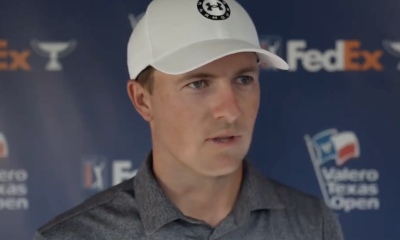



















GolfCodeWeekly.com
Dec 8, 2017 at 1:25 pm
Yup the increases in the last 10 to 15 years are almost nil, i really do not get the problem, golf is fine, the ball is fine
HDTVMAN
Dec 8, 2017 at 11:49 am
When I play, the ball doesn’t go both far enough & straight enough! I’d also like to see a chip which incorporates my watch to find the ball when it goes anywhere but the fairway, which it tends to do!
Rich
Dec 8, 2017 at 11:04 am
Let the Ball fly.. I like distance and to see it fly far is exciting.. The course design should be made narrower deeper ruff more trees and sandtraps and more water . Make it more of a gambler course.I don’t like these -21 under scores .What ever happened to these under -10 course score total for the event? That’s why most people love the OPEN (US,British) because they are low scoring and a test of the skill of a player to play the course where does the risk worth the reward ! The tougher the better with some RISK/REWARD when ever available . I like to see the distance but also I want to see accuracy with the yardage.
Mark
Dec 8, 2017 at 8:59 am
The most interesting part of this to me is the distance gains prior to the introduction of the Pro V1. Looking at the chart it appears there is about a 20 yard gain from 93-00. There is another increase after the introduction of the Pro V1. To me this speaks to the complexity of the distance discussion. It can’t be reduced to only the ball. There are a lot of other factors involved.
Think about how much more advanced we are in all the different areas like driver tech, shafts, athletics and power generation, biomechanics, launch conditions, etc. Sure rolling the ball back could reduce median distance, but it’s far from the only factor.
RJM
Dec 7, 2017 at 9:23 pm
They have also talked about lowering the speeds in auto racing (granted, for primarily safety reasons) but how many fans would the sport lose, say, for the Indy 500, if the top speeds were limited to 180 or 200. People go to golf tournaments to watch PGA players hit the snot out of a golf ball. Knowing that DJ, Jason, or Rickie is somehow going to be “limited” off the tee or from the fairway takes a boatload of interest out of the game.
jeff
Dec 7, 2017 at 8:30 pm
#Whocares?
The longest hitters aren’t the only ones winning…
Sounds like a bunch of old codgers irritated their old antiquated records could one day be broken, and the golf channel stirring up something to talk about during the off months. Get over it. The game SHOULD be made easier, not harder, want the game to stick around a while longer and grow? Although data shows its hardly been made easier…. The game needs to progress, I understand keeping the integrity of the game, but there is a fine line of overdoing that to the point of people just saying “forget it, golf is too hard, too expensive, and way to much trouble to deal with, i just want to have fun with my buddies”
The tour players are better athletes now, the equipment is better, the ball is better, the courses are longer, firmer, and harder faster greens. Swings technique is better, availability to data and what ACTUALLY makes the ball go further or roll longer is easier to get and more readily available. It all adds up to hitting the ball further. Again, why is this a bad thing? To say they used to be hitting 3-4 irons and now wedges? Thats not a diff of 33 yards, its a diff of 100 yards. 33 yards is a 1-2 clubs max. Not to mention todays “5” iron is actually a 3 or 4 iron loft of old… its like the 30 handicapper saying he hit is 8iron 180 yards, well maybe? But more then likely its actually a juiced up 5-6 iron… but who cares? Ain’t no tour pro hitting a wedge in from 215 yards when he used to have to use a 3 wood from 250 because of a ball.
I sure hope the people complaining about the ball going to far and the game becoming too easy, are the same people still riding a horse to work, and going to the haberdashery to get a new button for their will jacket they made themselves… They better not be using Amazon, or Nordstrom.com to buy their suits…. You all better not be using any form of technology to make things easier and better.
Get over it, it doesn’t matter, the game is hard enough. Every sport progresses, the athletes become stronger, faster, smarter. Its called evolution, and with out it, the game dies.
Carl
Dec 7, 2017 at 8:03 pm
It seems like many people are opposed to the ball going too far because it benefits the longer hitters. But restricting the ball isn’t going to take that advantage away. If anything, they will still be hitting mid-long irons where shorter players will be hitting hybrids or woods.
To me, the underlying problem for many people calling for ball rollbacks is that they don’t see length as equivalent skill-wise to a great short game or solid putting. I’m not sure why though because the tolerances for mis-hits and clubface to club-path are smaller when you are swinging at higher speeds. There is inherently skill involved to hit it long AND straight, just as there is skill involved in bunker shots or putting.
henry
Dec 9, 2017 at 11:55 pm
this is spot on. should Rickie or Jordan be penalized bc they putt too well? Distance is a skill. Let the ones who can hit it far keep it that way. And the funny thing is, DJs skill would be even more celebrated bc hed be hitting 7 irons while other guys are hitting 5 woods.
Terry Medlar
Dec 7, 2017 at 7:40 pm
I’m not really concerned about the distance the pros are hitting, but if you want to make a change, instead of changing/restricting the ball, why not just tell the pros they can’t use their drivers?
Jon
Dec 7, 2017 at 3:29 pm
Much ado about nothing.
Prime21
Dec 7, 2017 at 3:28 pm
Cigarettes & Alcohol have killed people for a long time, but they still exist. $ is the answer you are looking for, plain & simple.
Antoine Steeghs
Dec 7, 2017 at 2:56 pm
I think youcanlook at the masters. What clubs are used to the green? Are the using 4 irons 40 years ago and now 8 irons?
chinchbugs
Dec 7, 2017 at 2:40 pm
Can you make a shoe stink?
Genuine question…
Uhit
Dec 7, 2017 at 2:34 pm
…and you have to remember, that driving distance is in this case carry and roll.
Latter is strongly correlated to the course conditions and setup – fast and firm fairways.
The recorded carry distances show no increase in distance since more than a decade.
CB
Dec 7, 2017 at 1:14 pm
It’s not that the ball goes too far – it goes too straight. Because they have been designed so well aerodynamically, they tend to not bend as much as the old Balata and wound type balls – which is what Johnny Miller has been saying, as opposed to just calling out the problem of the ball flying too far. With forgiving heads and forgiving balls – the modern players are getting away with a lot of mis-hits that the old ball would not do as well, that you had to be a much better ball striker back then. But this current ball technology is part and parcel of all this tech of heads, shafts and balls, and to talk about rolling it back now, after Eldrick made all his money and success during his career from 2000 on – with the very balls that he wants repealed – is a joke.
Hunter Brown
Dec 7, 2017 at 1:38 pm
Great point here and I agree with you to a point however if it were a problem I think we would see scoring average dramatically drop. If you look at swimming when the “shark suit” was introduced 49 world records were broken in 18 months. This is a dramatic drop and why they are now banned. We have not yet seen that kind of drop in scoring avg or records to suggest a ban is needed in my opinion
Andrew Cooper
Dec 7, 2017 at 2:15 pm
I agree 100%, how much straighter the new equipment goes is every bit as important. This is rarely spoken about. Courses have been lengthened proportionately with the new equipment, but have they been tightened up proportionately? I would imagine with measuring technology we could get a fairly good number on how much straighter the ball flies now. And let’s say we find it’s around 10% straighter (to pick a number) then bring in tour fairways by a similar amount.
Barry Martin
Dec 7, 2017 at 12:52 pm
Yes, we are about 15 years too late, but there were guys – like Nicklaus, Geoff Shackelford, etc. – who were calling it out back then. But there were a chorus of people, led by Uncle Wally at Titleist who said “Nothing to see here kids, everything’s fine, stop whining.”
https://en.wikipedia.org/wiki/Boiling_frog
Hunter Brown
Dec 7, 2017 at 1:41 pm
You are definitely right I remember Nicklaus talking about this a long time ago and that was kind of my point that it has always been a topic of conversation and why the USGA puts limits on how much it can improve. If we really do want to take away distance on the PGA Tour I think there is a lot easier and more simple way to do it. Just take away the tee. It would force players to use higher lofted “drivers” and would take away the advantage of hitting up on it. Now the unfortunate part about most of these solutions is that it will actually give the longer hitters even more of an advantage
Greg V
Dec 7, 2017 at 12:09 pm
Hunter, you stated that there has never been a ball roll-back, but you are mistaken.
For 1931, the USGA reduced the maximum weight of the ball from 1.62 ounces to 1.55 ounces. The players didn’t like it, as the ball didn’t go as far, and it was more affected by wind. They called it the ‘floater.”
It might be time to look at a reduction in the weight of the ball again, as today’s ball and club technology afford much more control in the wind. If the USGA could roll back the ball in 1931, they can certainly do it again soon to keep course lengths for elite golfers from approaching 8,000 yards.
Hunter Brown
Dec 7, 2017 at 1:35 pm
Thanks Greg I was unaware of this for sure so I appreciate you pointing it out. However it seems as though it only lasted a year so I would still contend the ball won out. Also what are your hindrances to 8,000 yard courses for pros? Also I have seen plenty of “shorter” courses hold the test of the pros. See Oakmont, Merion, Riviera, Shinnecock, etc. All of those cut lines in US Opens were significantly over par.
Andrew Cooper
Dec 7, 2017 at 11:55 am
Good work Hunter. The stats show that the limits on balls and clubs have worked since the early 2000s, so it’s strange to be having this debate now. An unspectacular 3.5 paces forward over the last 15 years-not what the industry would want the golfing public to know maybe, but there it is. So if the rules are working why change?
dat
Dec 7, 2017 at 11:44 am
I think it goes too far, and nothing can be done to stop it. If in 15 years the ball goes 15 yards further, that will continue to make the game less exciting to watch. Driver, wedge into every hole is just boring.
Drew Boggs
Dec 7, 2017 at 11:26 am
You can make great short par 4s like everyone wants to see and just make them absolutely brutal. Risk/Reward holes get the most attention out of any course or PGA Tour venue. Example, #10 at Riviera. Arguably the greatest short par 4 on tour, and everyone watches it. If you roll back the ball, you are hurting the game of golf. Juniors will not be as involved, and everyone wants and chases the 300+ yard drives. It’s our game today and what it will continue to be.
Bob Jacobs
Dec 7, 2017 at 11:05 am
I think we need 10 more articles on ball go too far!!